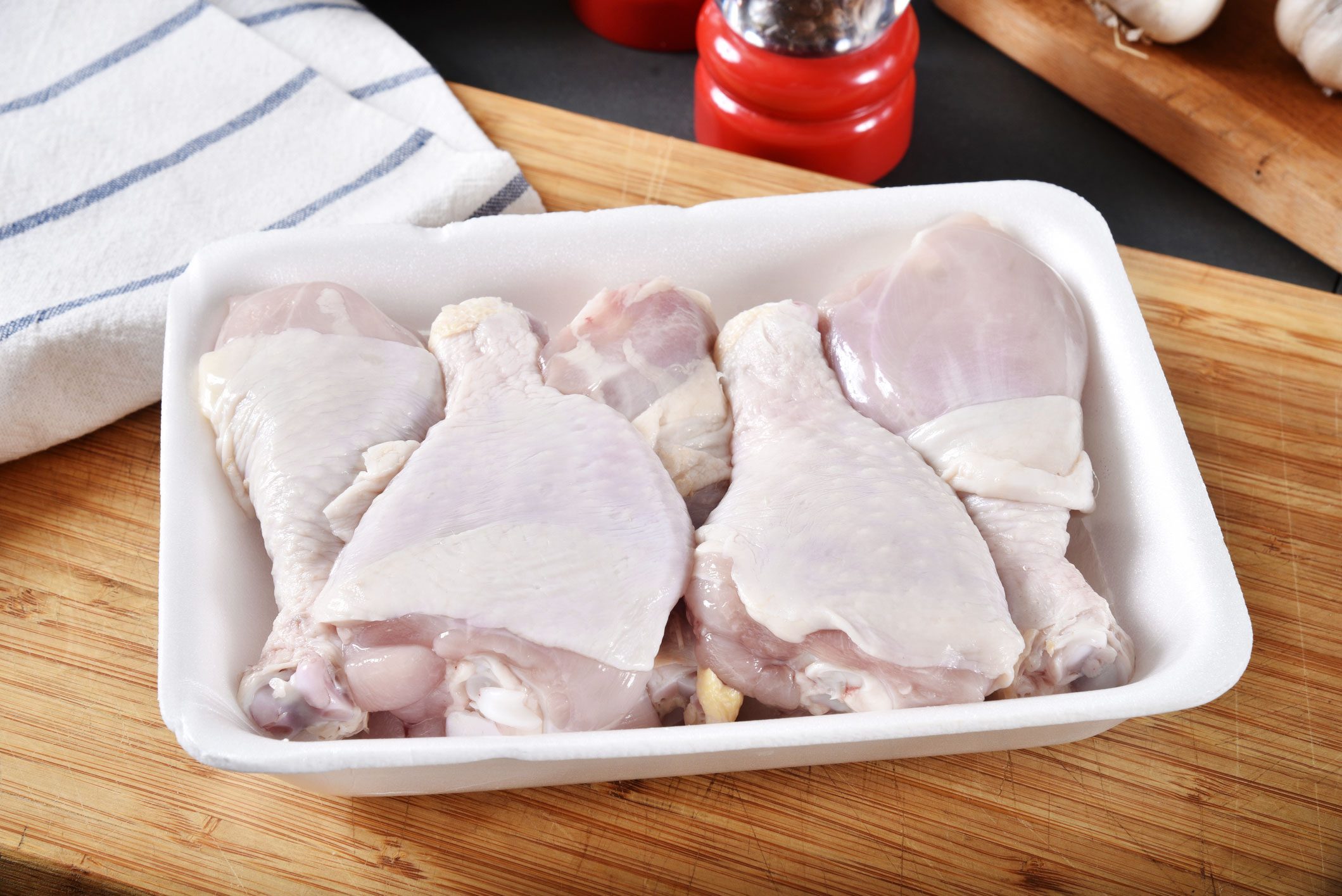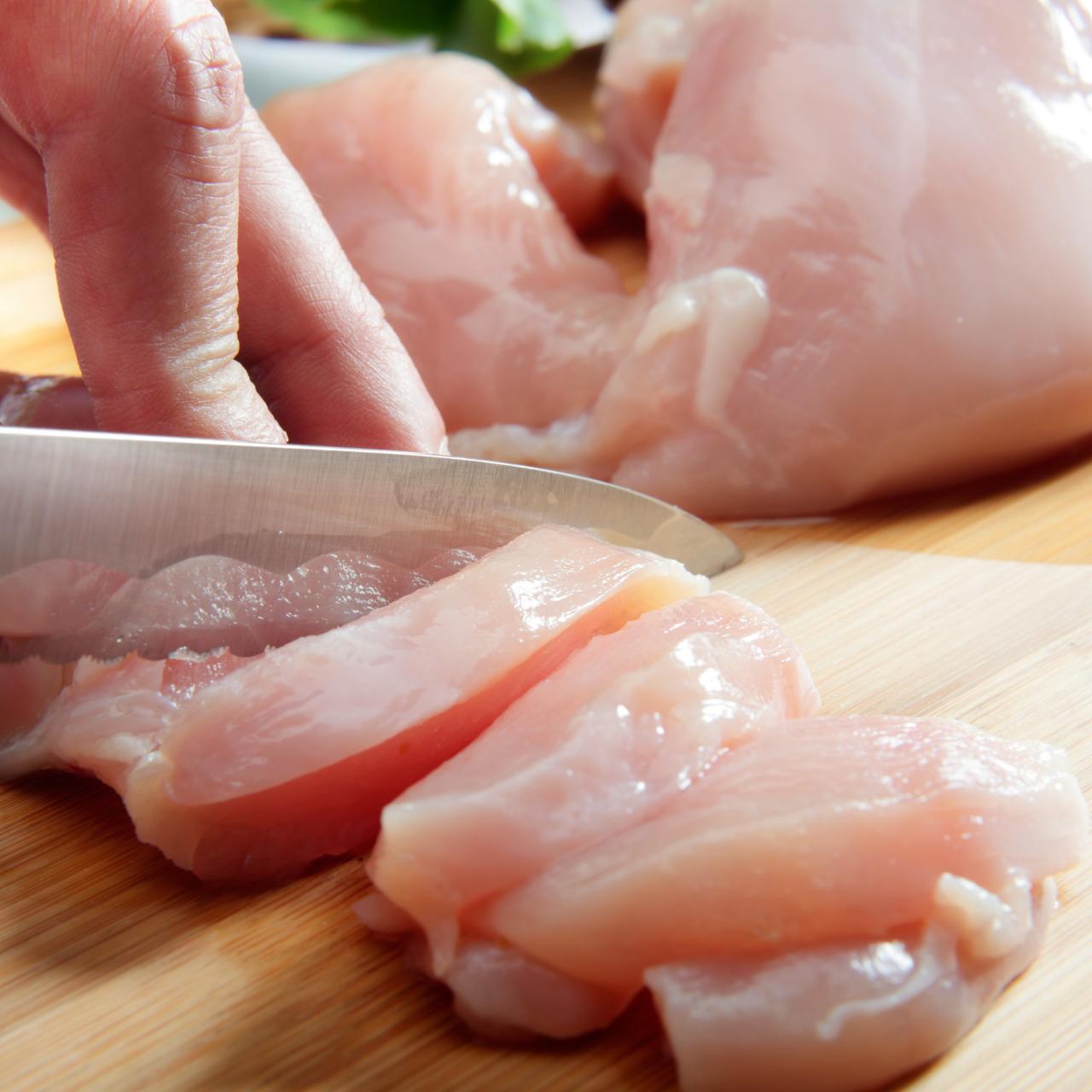Importance Of Understanding Chicken Expiration Dates

Understanding chicken expiration dates is crucial for ensuring the safety and quality of the chicken you consume. The sell by date provides valuable information about the freshness and shelf life of the chicken. By paying attention to these dates, you can avoid purchasing expired products and reduce the risk of foodborne illnesses. Additionally, understanding how to properly store and handle chicken can further extend its shelf life. This knowledge allows you to make informed decisions and ensures that you and your family enjoy safe and delicious chicken meals.
Considerations When Buying Chicken
When buying chicken, there are several considerations to keep in mind. Firstly, check the sell by date to ensure that the chicken is fresh and hasn’t expired. Look for chicken that is firm and has a pink color, avoiding any chicken with a gray or slimy appearance. Opt for chicken that is properly packaged and stored at the appropriate temperature. Additionally, consider the type of chicken you desire, whether it be boneless, skinless, or a specific cut. Lastly, choose chicken from reputable suppliers to ensure quality and safety.
Why Understanding Sell By Dates Is Crucial
Understanding sell by dates is crucial for ensuring the safety and quality of the chicken you consume. Sell by dates serve as a guideline for retailers to determine the shelf life of the chicken and when it should be removed from the shelves. By understanding these dates, you can make informed decisions about which chicken to purchase and consume. Eating chicken that has exceeded its sell by date can increase the risk of food poisoning and other foodborne illnesses. Therefore, it is important to pay attention to these dates and prioritize the freshness and safety of the chicken you buy.
What Does The Sell By Date On Chicken Mean?

The sell by date on chicken indicates the date until which the retailer can display the chicken for sale. It serves as a guideline for retailers to ensure the freshness and quality of the chicken. It is important to note that the sell by date is not an expiration date. It is still safe to consume chicken after the sell by date as long as it has been stored properly. However, it is generally recommended to consume the chicken within a few days of the sell by date for the best quality and taste.
Explanation Of Sell By Date
The sell by date on chicken serves as a guideline for retailers to ensure the freshness and quality of the product. It indicates the date until which the retailer can display the chicken for sale. However, it is important to note that the sell by date is not an expiration date. It simply provides information for inventory management and is not a direct indication of safety. Consumers can still safely consume chicken after the sell by date, as long as it has been stored properly. It is recommended to use the chicken within a few days of the sell by date for the best quality and taste.
Difference Between Sell By, Use By, And Expiration Dates
Sell by, use by, and expiration dates are all terms used to provide information about the freshness and quality of food products, including chicken. While these dates may seem similar, they have distinct meanings.
Sell by date indicates how long a retailer can display the product for sale. It helps with inventory management and does not necessarily indicate safety.
Use by date, on the other hand, is the last date recommended for consuming the product while it is at its peak quality. It is important to pay attention to this date to ensure the best taste and texture.
Expiration date is the final date after which the product should not be consumed. It indicates that the product may no longer be safe to eat.
Understanding the differences between these dates allows consumers to make informed decisions about the freshness and safety of chicken.
Factors Affecting Chicken Expiration

Factors affecting chicken expiration include storage conditions and temperature. Proper storage is crucial in preserving the quality and safety of chicken. When stored at temperatures above 40°F (4°C), bacteria can multiply quickly, leading to spoilage and potential foodborne illnesses. It is recommended to store chicken in the refrigerator at a temperature below 40°F (4°C) to slow down bacterial growth. Additionally, how the chicken is packaged and handled during transportation and at the retail level can also impact its expiration date. It is important to follow proper storage and handling guidelines to ensure the longest possible shelf life for chicken products.
Storage Conditions Impact On Shelf Life
Proper storage conditions play a crucial role in determining the shelf life of chicken. The way chicken is stored can significantly impact its freshness and safety. When chicken is exposed to temperatures above 40°F (4°C), bacteria can multiply rapidly, leading to spoilage and potential foodborne illnesses. It is essential to store chicken in the refrigerator at a temperature below 40°F (4°C) to slow down bacterial growth. Additionally, the packaging and handling of chicken during transportation and at the retail level can also affect its expiration date. Following proper storage guidelines ensures the longest possible shelf life for chicken products.
How To Properly Store Chicken In The Refrigerator
To properly store chicken in the refrigerator, follow these guidelines:
- Keep chicken in its original packaging or place it in a leak-proof bag or container to prevent cross-contamination.
- Store chicken on the bottom shelf of the refrigerator to prevent any drippings from contaminating other foods.
- Set the refrigerator temperature below 40°F (4°C) to slow down bacterial growth and maintain freshness.
- Use chicken within 1-2 days of purchase or freeze it for longer storage. If freezing, be sure to label the package with the date.
- Avoid overcrowding the refrigerator to allow for proper air circulation and maintain a consistent temperature.
By following these storage practices, you can ensure that your chicken stays fresh and safe for consumption.
How To Tell If Chicken Has Gone Bad

When it comes to chicken, it’s important to be able to tell if it has gone bad to avoid any unpleasant consequences. Here are some signs to look out for:
- Foul odor: If the chicken emits a strong, unpleasant smell, it is likely spoiled and should be discarded immediately.
- Color changes: Fresh chicken should have a pinkish color. If it appears gray or has any green or yellow patches, it has likely gone bad.
- Texture: Spoiled chicken may feel slimy or sticky to the touch. Any unusual texture indicates that it is no longer safe to consume.
- Mold or unusual growth: If you notice any mold or unusual growth on the chicken, it is a clear sign that it is spoiled.
- Excessive freezer burn: If stored in the freezer, chicken may develop freezer burn, which affects its quality and taste.
Trust your senses and use your judgment. If there are any doubts about the freshness of the chicken, it’s best to err on the side of caution and throw it away. Remember, consuming spoiled chicken can lead to foodborne illnesses, so it’s crucial to be vigilant when assessing its quality.
Signs Of Spoiled Chicken
Signs of spoiled chicken include a foul odor, discoloration, unusual texture, presence of mold or unusual growth, and excessive freezer burn. If the chicken emits a strong, unpleasant smell, it is likely spoiled. Fresh chicken should have a pinkish color, so any gray or green/yellow patches indicate spoilage. Additionally, spoiled chicken may feel slimy or sticky to the touch. Any mold or unusual growth on the chicken is a clear sign of spoilage. If the chicken has excessive freezer burn, it has likely been stored improperly and should be discarded. Trust your senses and use your judgment when assessing the quality of chicken.
When To Trust Your Senses And Discard Chicken
When it comes to the safety of chicken, trusting your senses is essential. If you notice any signs of spoilage such as a foul odor, discoloration, unusual texture, presence of mold or unusual growth, or excessive freezer burn, it is best to discard the chicken. This is especially true if the chicken feels slimy or sticky to the touch or if it has an off taste. Your senses are your best tool for determining if the chicken is no longer safe to eat. Remember, it’s better to be safe than sorry when it comes to consuming spoiled chicken.
Safe Handling Practices For Chicken

Safe handling practices are crucial in order to prevent foodborne illnesses caused by contaminated chicken. Here are some tips for safely handling chicken:
- Wash hands thoroughly: Before and after handling chicken, wash your hands for at least 20 seconds with warm water and soap.
- Separate from other foods: Keep raw chicken separated from other foods, especially those that don’t require cooking, to avoid cross-contamination.
- Use separate cutting boards and utensils: Designate specific cutting boards and utensils for raw chicken to prevent the spread of bacteria to other foods.
- Cook thoroughly: Ensure that chicken is cooked to an internal temperature of 165°F (74°C) to kill any harmful bacteria.
- Refrigerate promptly: After cooking or thawing chicken, refrigerate leftovers within two hours to prevent bacteria growth.
By following these safe handling practices, you can reduce the risk of foodborne illnesses and enjoy chicken that is delicious and safe to eat.
Tips On Safe Chicken Handling
When it comes to handling chicken safely, there are some important tips to keep in mind. First and foremost, always wash your hands thoroughly with warm water and soap before and after handling chicken. This helps to prevent the spread of harmful bacteria. Additionally, be sure to separate raw chicken from other foods, especially those that don’t require cooking, to avoid cross-contamination. It’s also crucial to use separate cutting boards and utensils specifically designated for raw chicken to prevent the spread of bacteria. Lastly, always cook chicken thoroughly to an internal temperature of 165°F (74°C) to ensure any potential bacteria is killed. By following these tips, you can safely handle chicken and reduce the risk of foodborne illnesses.
Avoiding Cross-contamination And Foodborne Illnesses
When it comes to handling chicken, it’s essential to take precautions to avoid cross-contamination and reduce the risk of foodborne illnesses. One of the key steps is to separate raw chicken from other foods, especially those that won’t be cooked. This can prevent the transfer of harmful bacteria. Additionally, using separate cutting boards and utensils designated only for raw chicken can further minimize the spread of bacteria. It’s also important to clean and sanitize surfaces that come into contact with raw chicken to eliminate any potential contamination. By practicing safe handling techniques, you can protect yourself and others from foodborne illnesses.
Clarifying Misconceptions And Best Practices
When it comes to understanding chicken expiration dates, there are several misconceptions that need to be clarified. One common misconception is that the sell-by date is an indication of when the chicken has gone bad and should be immediately discarded. However, this is not the case. The sell-by date is simply a guideline for the store to know how long they can display the chicken for sale.
Another misconception is that cooking chicken after the sell-by date automatically makes it safe to eat. While cooking chicken thoroughly can kill bacteria, it does not eliminate all the risks associated with spoilage. It is still important to use your judgment and inspect the chicken for any signs of spoilage before consuming it.
To ensure safe handling practices, it is best to follow some best practices. Always store chicken properly in the refrigerator, making sure to keep it below 40°F. It is also essential to practice good hygiene, such as washing hands and utensils thoroughly after handling raw chicken to avoid cross-contamination.
In conclusion, understanding chicken expiration dates is essential for food safety, but it is also important to clarify any misconceptions. By following proper storage and handling practices, you can enjoy chicken safely even after the sell-by date, as long as it shows no signs of spoilage.
FAQ About Sell By Date On Chicken: Understanding Chicken Expiration Dates
Q: What does the “Sell by Date” on chicken packaging mean?
A: The “Sell by Date” on chicken packaging is the date until which the retailer should sell the chicken. It is not an expiration date but rather a guideline for retailers to ensure freshness.
Q: Is it safe to eat chicken after the “Sell by Date” has passed?
A: It is generally safe to eat chicken after the “Sell by Date” has passed if it has been stored properly. However, it’s essential to check for any signs of spoilage such as an off odor, unusual color, or slimy texture.
Q: How should chicken be stored to ensure its freshness after purchase?
A: To ensure the freshness of chicken after purchase, it should be stored in the refrigerator at or below 40°F (4°C). Chicken should be kept in its original packaging or transferred to an airtight container to prevent cross-contamination.
Q: What are the differences between “Sell by Date,” “Best if Used By Date,” and “Use By Date” on chicken packaging?
A: The “Sell by Date” indicates the date until which the retailer should sell the product. The “Best if Used By Date” suggests the optimal quality of the product, while the “Use By Date” signifies the date by which the product should be consumed for safety reasons.
Q: Can chicken be frozen to extend its shelf life?
A: Yes, chicken can be frozen to extend its shelf life. It’s recommended to package it securely to prevent freezer burn and consume it within a few months for the best quality.
Q: How can one determine if chicken has gone bad?
A: To determine if chicken has gone bad, check for signs such as a sour or pungent smell, a change in color to gray or greenish, a slimy texture, or the presence of mold. When in doubt, it’s best to discard the chicken to avoid foodborne illnesses.

Johnny Knuckles Knock-out BBQ is a culinary haven for barbecue enthusiasts, offering a fusion of traditional BBQ and tantalizing street fare. Our secret to delivering mouthwatering dishes lies in our meticulous preparation process. Each cut of meat is lovingly hand-rubbed and slow-smoked over 100% hardwood, creating a symphony of flavors that will leave your taste buds dancing. Whether planning a special event or simply craving an unforgettable meal, Johnny Knuckles Knock-out BBQ is here to elevate your dining experience. Our catering services are designed to bring the sizzle and aroma of our delectable BBQ to your event, ensuring that every guest leaves with a full belly and a smile.